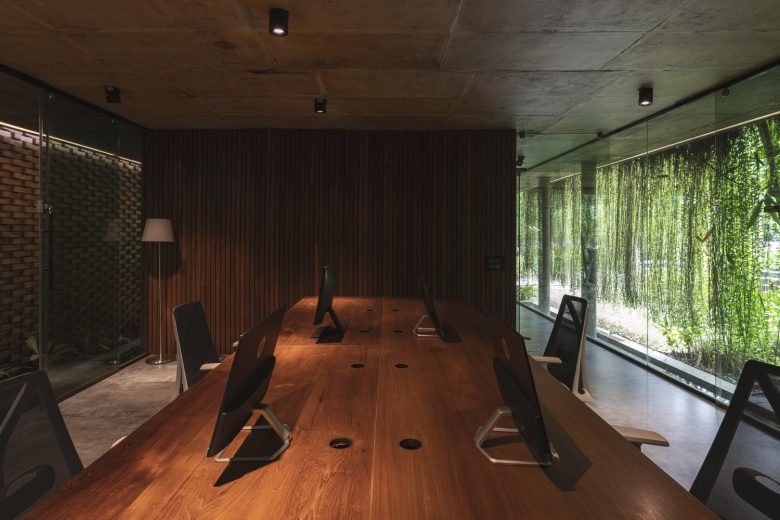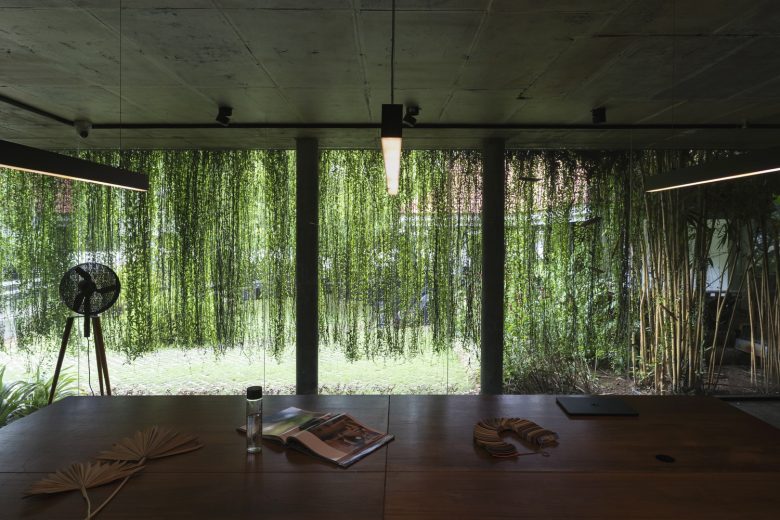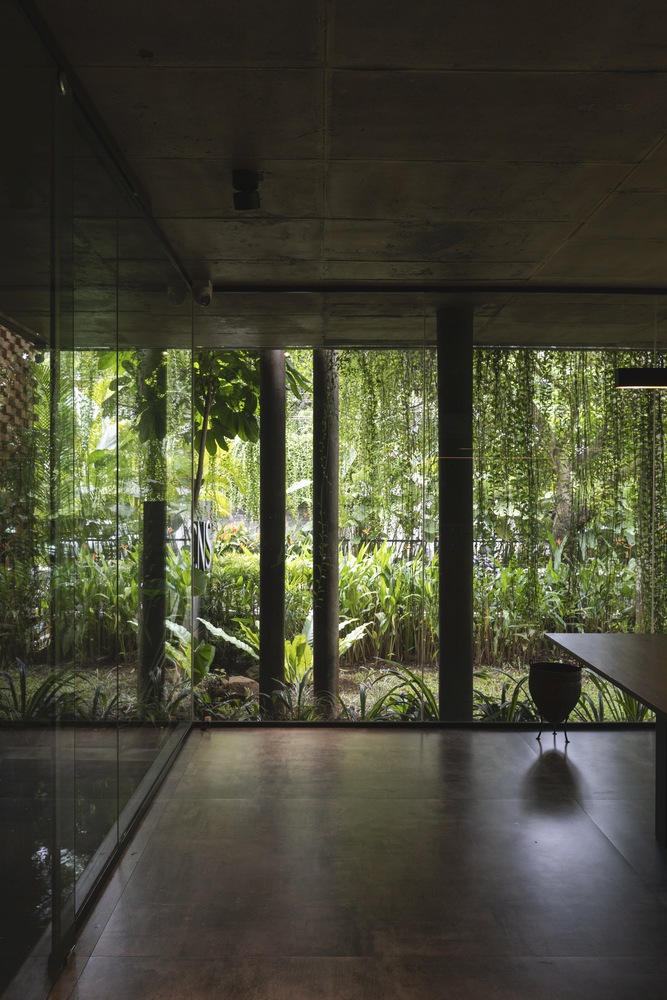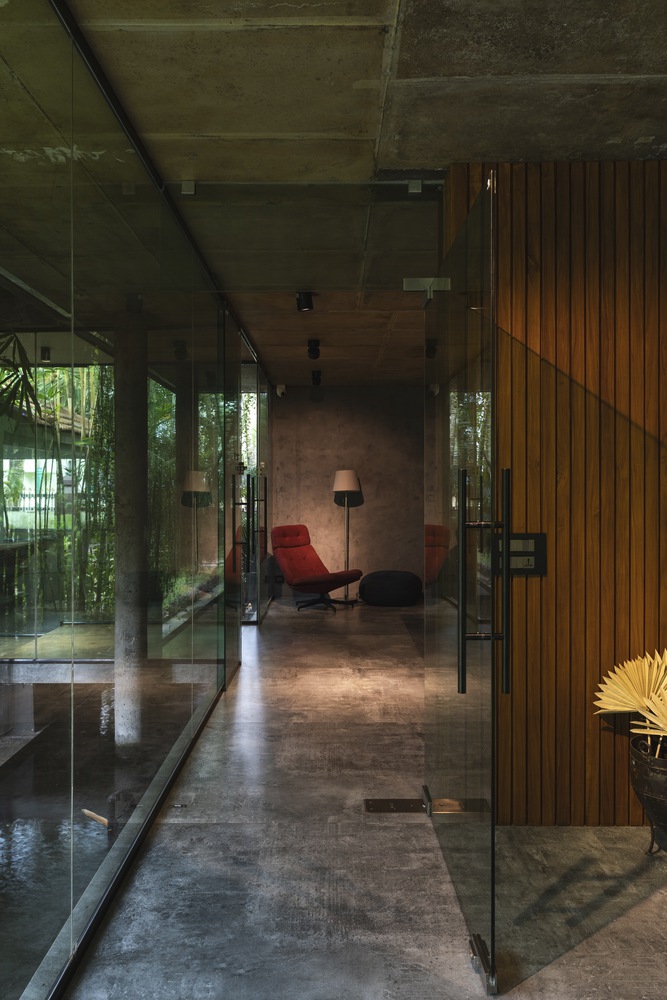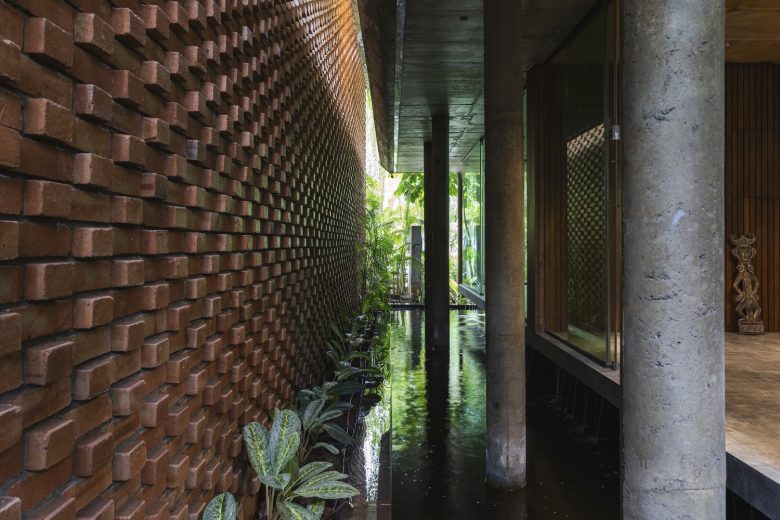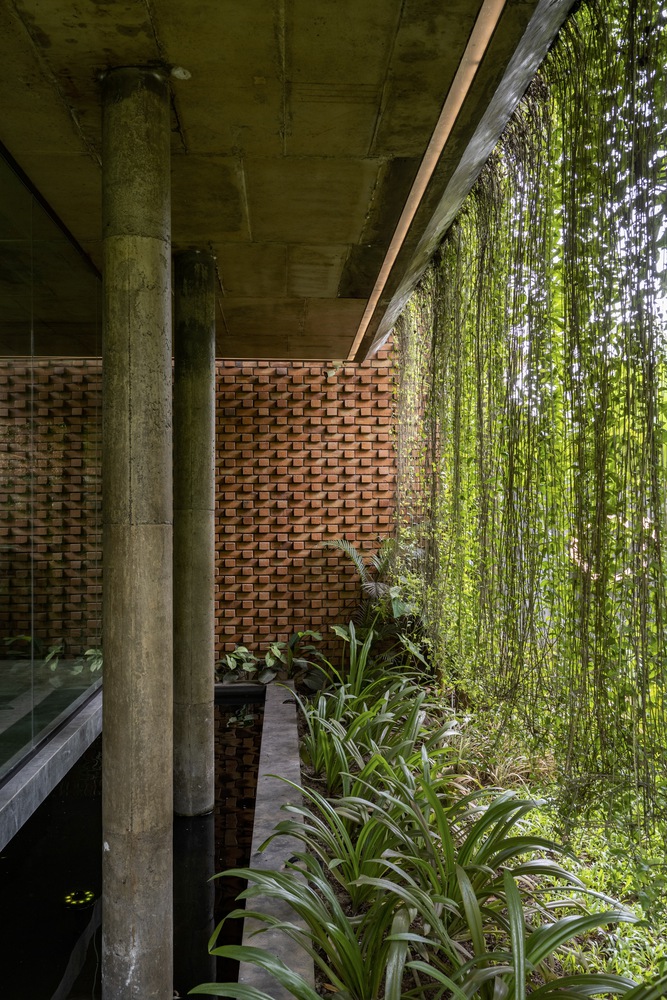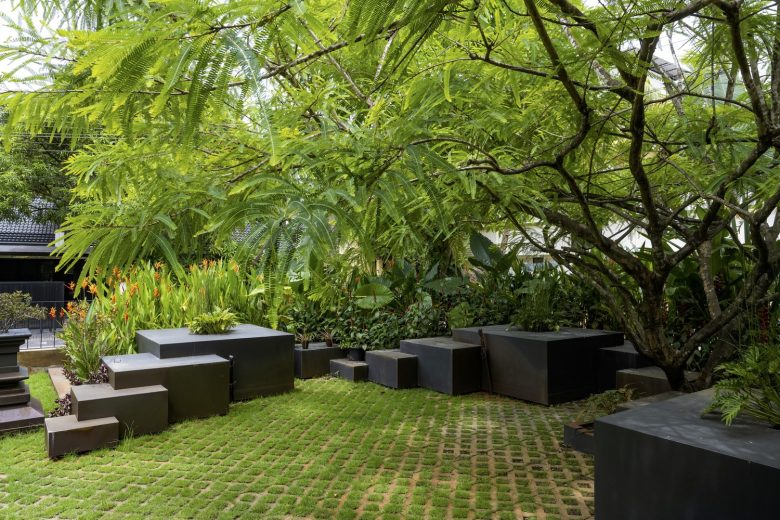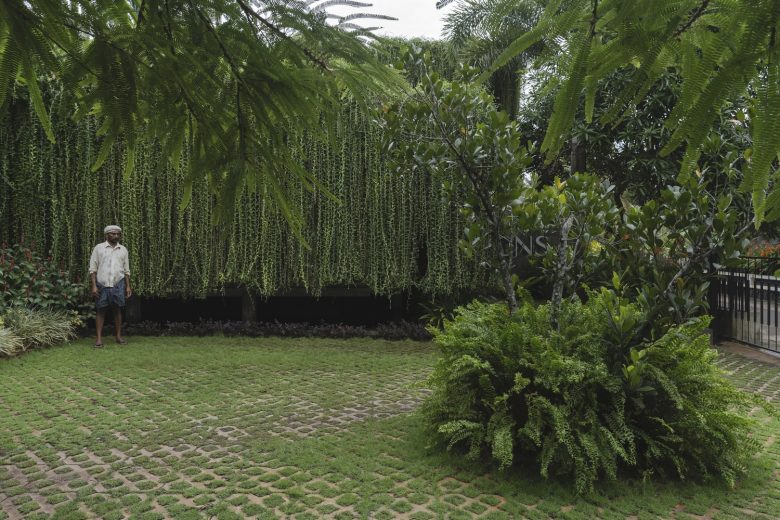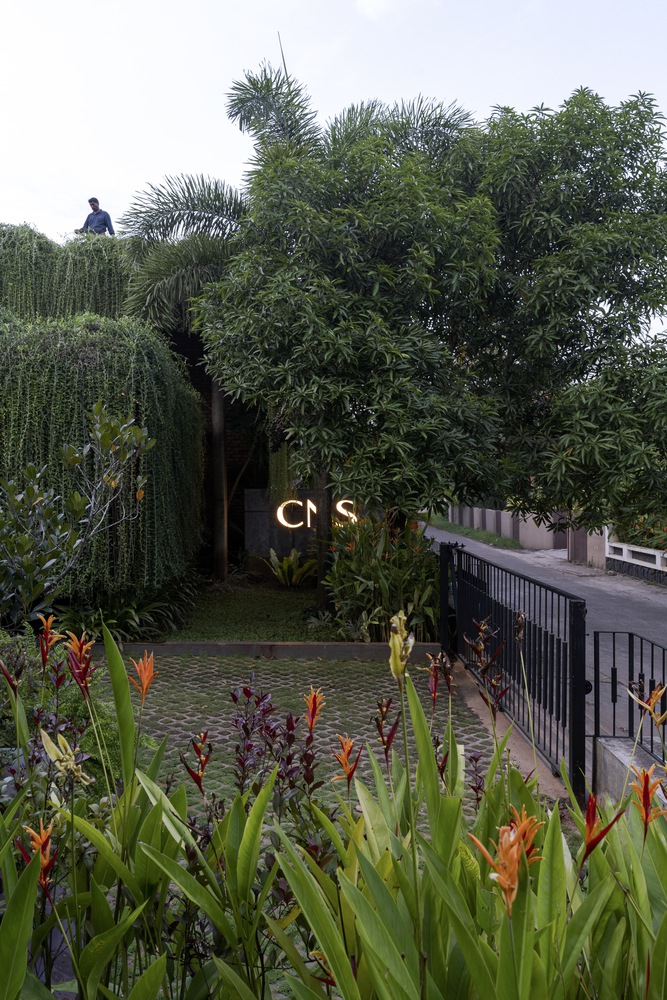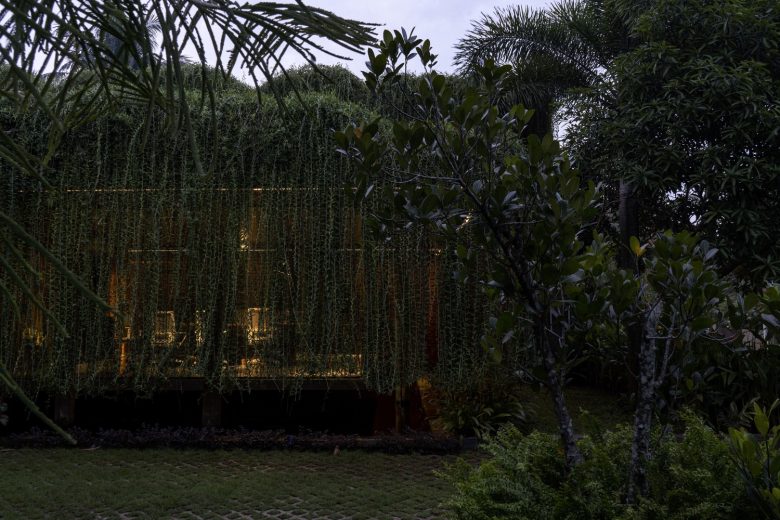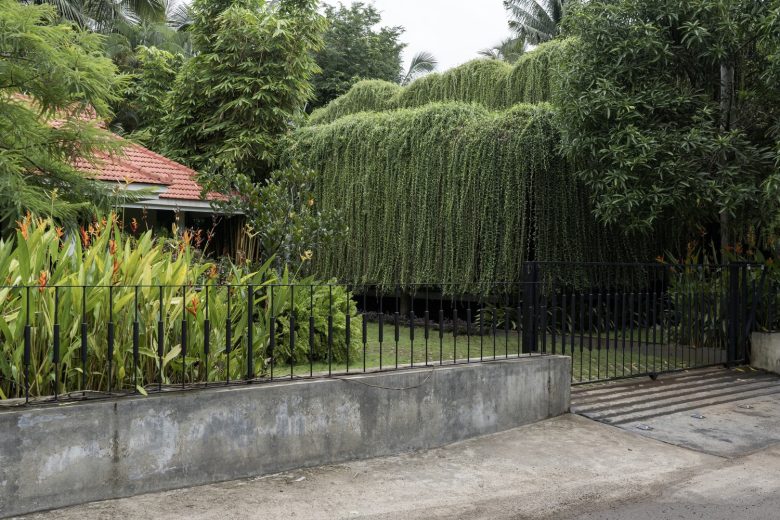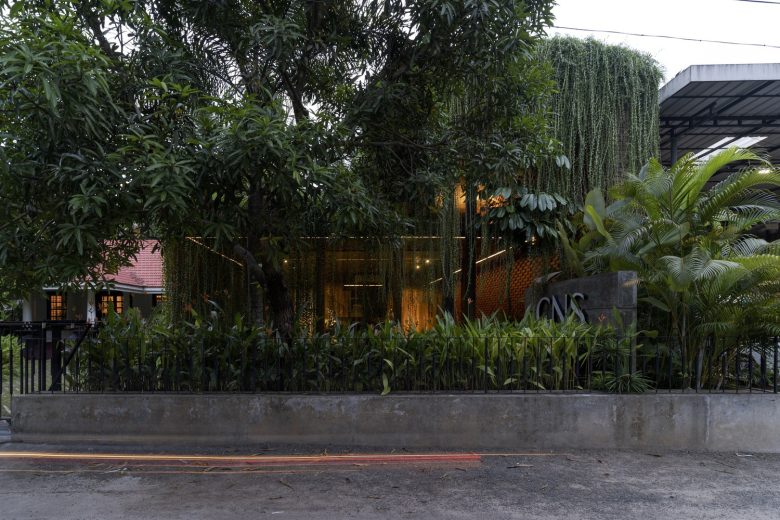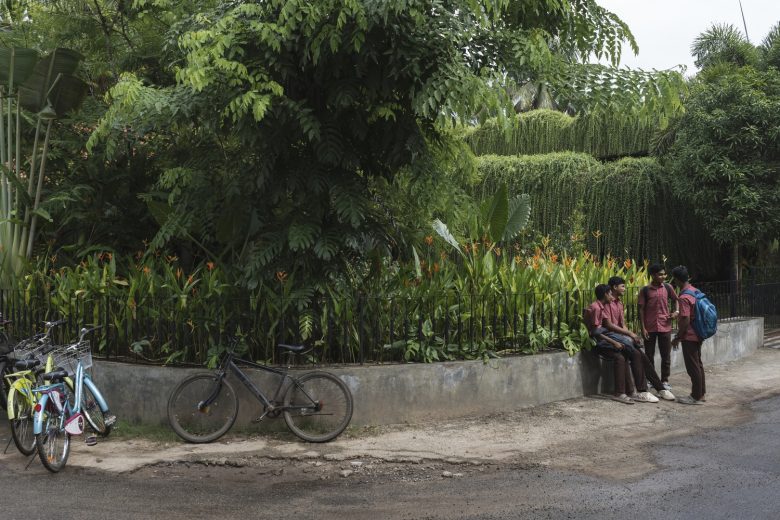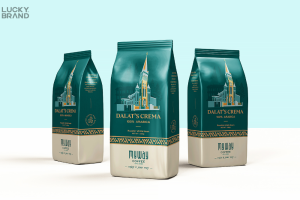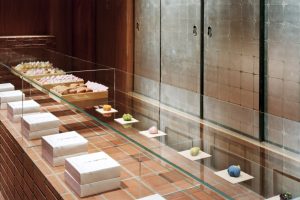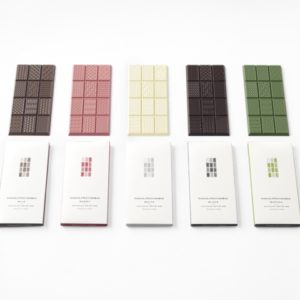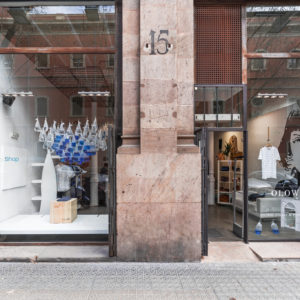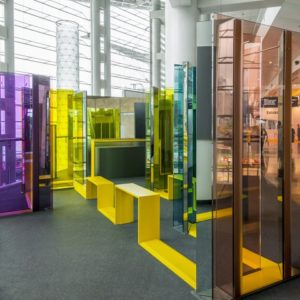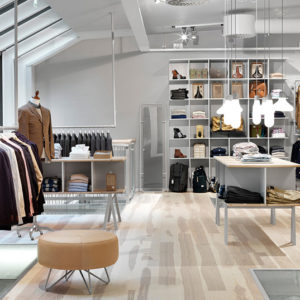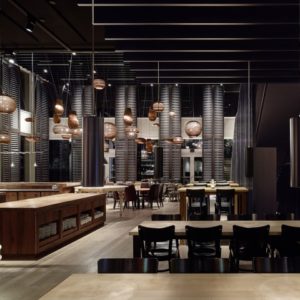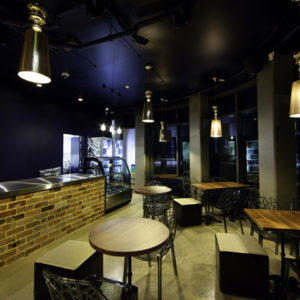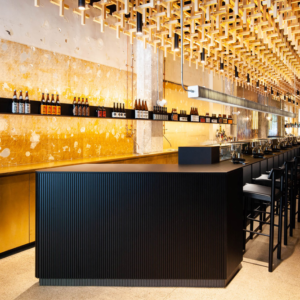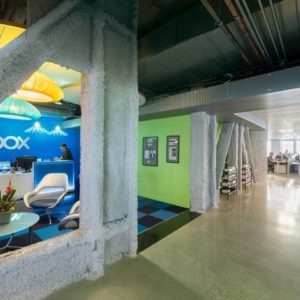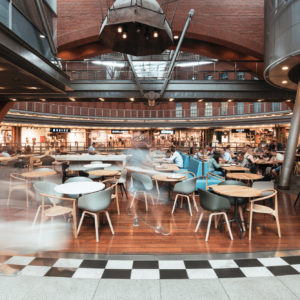
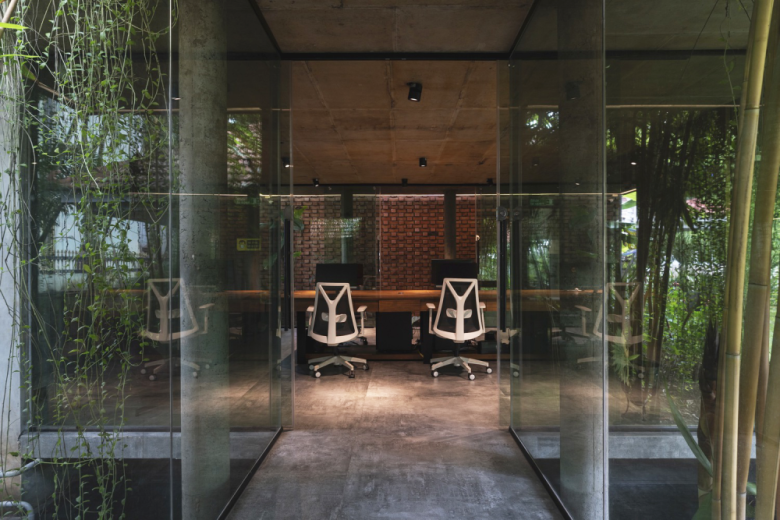
The design requirement was a minimalistic contemporary design with glass-walled spaces and rich landscaping. The client’s requirement to incorporate koi fish ponds in the landscape has been set as a priority. Instead of creating a pond amidst the landscape, an experiment was done to bring the waterbody and landscape into the design. Hence, the concept of a floating office was explored by introducing the waterbody and designing it above it. The landscaping was used as a tool to provide uniformity. To preserve the architecture of the old office as it is, but to blend it with the new office. The design has to embrace the rich green landscape into the interior spaces. Thus, adopting tropical architecture to blend the built environment and the landscape efficiently turned into a beautiful and unique office space.
The context of the site and the client’s requirements have influenced the development of a unique design. Since the new office is an extension, it was important to provide visual and spatial continuity for the design as a whole. Visibility was required from the client’s residence south of the site; hence, the design was oriented accordingly. Since the site is in a tropical humid climate, it was important to intervene and create a microclimate to provide an ambient working atmosphere. The site exhibited a rectangular shape, which influenced the planning of the office to be in rectangular shape. A view of the office has to be attained from the client’s residence situated in the west. Thus, the orientation of the design was influenced by that, along with the climate and shape of the site.
Another challenge was the dust and noise from the carpentry workshop in the east of the proposed site. The five-meter-high wire-cut brick wall was introduced, protecting the site from noise and dust pollution and providing an earthy tone. The introduction of a Koi fish pond with moving water ensures the challenge of creating a microclimate. The curtain creepers make a n=linear roof garden and also contribute to maintaining thermal comfort.
A workstation and conference room that viewed the exterior landscape were achieved by providing full-height glass doors and wooden details, which created a pleasant and energetic office space. The koi fish pond running peripherally throughout the plan is accessed from both spaces. The curtain creepers from the roof block the sunlight, impart privacy, and enhance the aesthetics. The Koi fish pond is designed with constantly rippling water, creating a subtle movement on the surface. This moving water helps control the humidity along with plants and trees, creating a thermal comfort zone even on a scorching sunny day. The use of overbeams helps make the spaces more spacious, which is further aided by the use of exposed finishes and sleek design features. The use of wire-cut brick walls, which are sunlit through the perforation in the roof, is another major feature of the design.
Significance of the project—The design attempted to unify nature with the built environment. By asking the question, ‘Why cannot one design nature along with the spaces we require? ‘ The project aims to establish the importance and benefits of incorporating soft scapes into a design. The design reinforces the idea of exposing the materials in their true form. Regardless of the function and size of the project, quality has to be assured for any designed space.
Areas of innovation – The floating structure is supported by columns immersed in the water body. This enhances the lightness of the design by elevating it from the ground. The water body is accessible from both working spaces, allowing one to enjoy a spa during work breaks. The design inhales the landscape and benefits the users and visitors equally. Additive transformation employed on the hardscape encourages outdoor meetings where in between lies a ‘Tulasi Thara,’ a classic element of Kerala architecture redefined with a simpler form. Details of sustainable architecture: The office functions on solar power, making it a net zero building. The nutrient-rich water from the koi pond irrigates the surrounding plants, as the fish provide beneficial bacteria and minerals. Porous outdoor paving allows water to percolate into the ground during the rainy season, minimizing runoff and retaining the groundwater table.
Details of socially responsible architecture – The office design is introduced in a locality unaware of the importance of retaining, preserving, and embracing nature. The office architecture is an example of addressing the importance of energy efficiency and bringing about changes from the locals’ perspective. The immediate office setting has a school, an opportunity to inspire the younger generation to perceive, think, and build out of the box. User profile and response – The users are engineers and architects. The end users appreciate that the new office creates a different working experience.
Architects: Studio Avocado
Lead Architects: Ar. Yasin KM
Photographs: Syam Sreesylam
